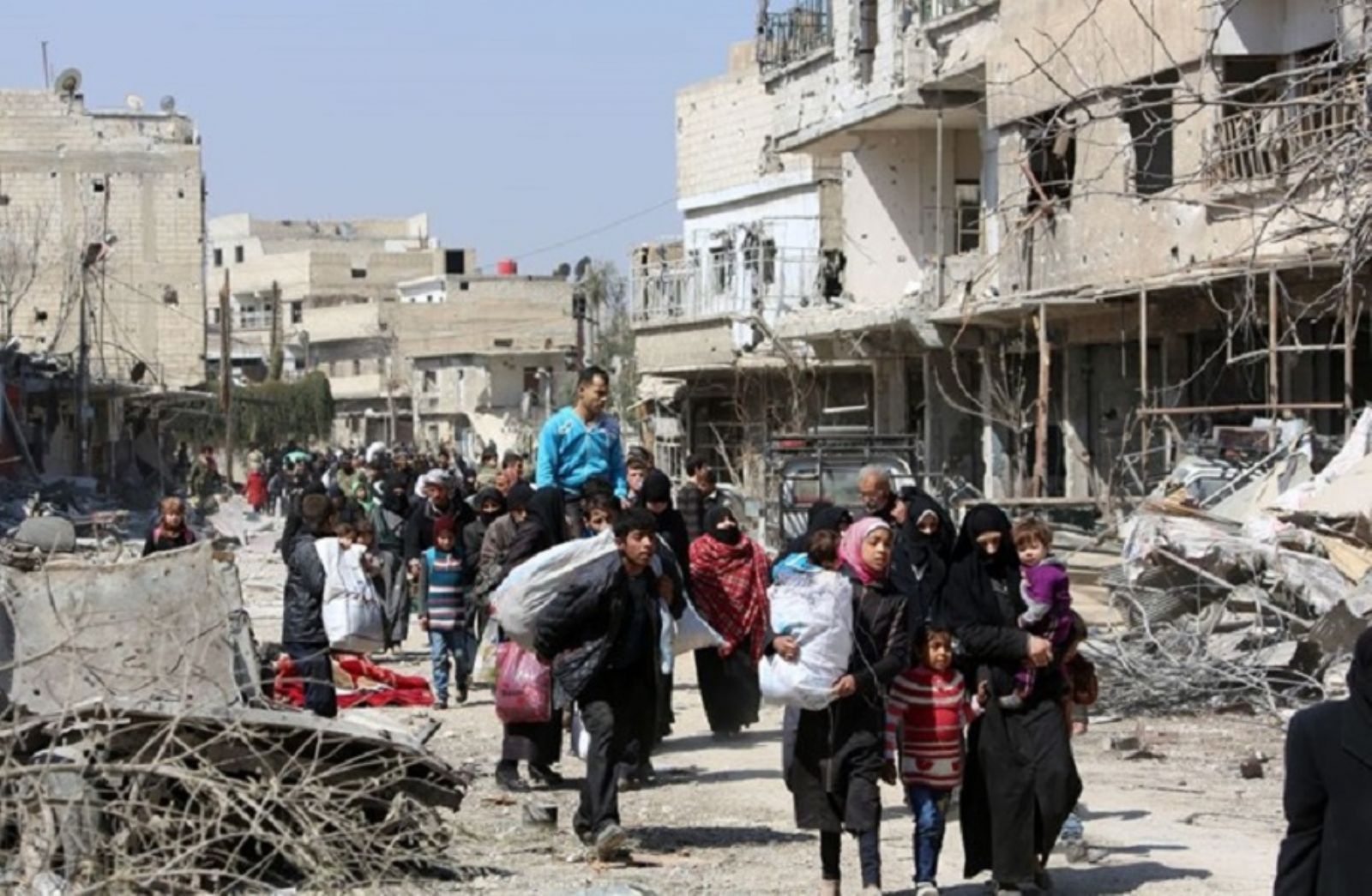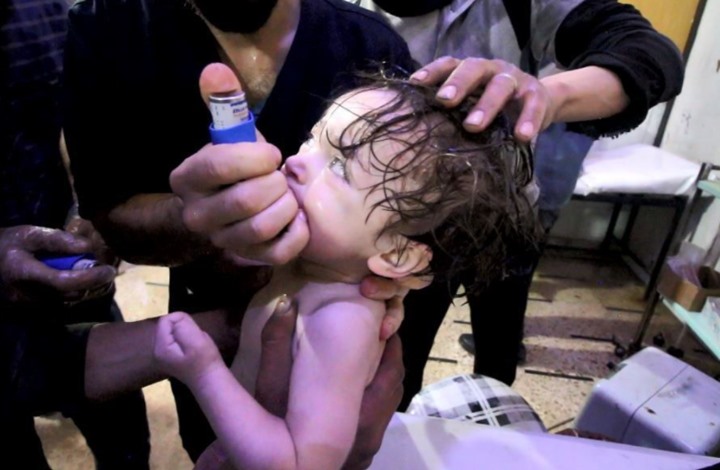Eastern Ghouta: The complete story

Kamal Al-Sarouji
June11, 2018
Since the beginning of the popular uprising against the Syrian regime, Eastern Ghouta (a suburban area to the south east of Damascus) has been subjected to the systematic destruction of social and economic structures at the hands of the Syrian regime and its allies – the Russians, Iranians and foreign militias. These allied forces have committed serious violations that amount to war crimes and crimes against humanity. These violations include extrajudicial killings, compulsory disappearances, torture, deliberate and indiscriminate shelling, laying siege to residential neighborhoods, sexual violence the deliberate targeting of zones protected by international law and the conventions of war, forced displacement and demographic restructuring.
The Syrian Network for Human Rights (SNHR) reported that since 2011, it has documented the killing of 12,763 civilians, including 1,463 children and 1,127 adult females.
According to the SNHR, over 6,583 people remain arbitrarily imprisoned by the regime, while over 1,218 people have been killed while being tortured, including 3 children and 7 adult females.
SNHR has also reported that 427 people have died, including 221 children and 71 adult females, during the siege enforced on Eastern Ghouta since October 2017.
By the end of 2017, the Syrian regime began its preparations to politically and militarily take control over Eastern Ghouta, disregarding the fate of nearly 400,000 civilians living there.
According to SNHR figures from 14 November 2017 to 24 February 2018, 1,121 civilians, including 281 children and 171 adult females, were killed. During that period, 18 medical facilities, 32 public markets and 11 schools were targeted. The regime used internationally banned weapons, as well as various types of conventional weaponry.

At the same time, many activists claim that the actual number of casualties is in reality much larger. However, it is difficult to document what is happening there, as a result of the lack of SNHR presence on the ground and the lack of media attention to many issues, including the numbers of casualties from the area who have joined opposition forces.
During the recent military campaign, the regime increased its use of force and began gradually taking control of parts of Ghouta. After about 50 days, they had managed to gain control of 80% of the area through the division of the area into three separate sectors and then reaching unilateral agreements with each sector separately.
On March 25 the regime reached an agreement with representatives from the city of Douma, the largest city in Eastern Ghouta, that would allow residents to exit the city if they chose to do so – including fighters with light weapons – or remain if they wanted to. However, the agreement fell through. The regime resumed its intensive campaign on the city. On April 7th, the regime used internationally banned chemical weapons twice on the city killing nearly 60 civilians and injuring nearly a thousand. This forced Douma’s representatives to resume negotiations that led to an agreement that allowed residents to flee towards northern Syria.
After the regime’s use of chemical weapons, the opposition’s popular movement reacted by increasing and intensifying demonstrations and vigils in the countries hosting Syrian refugees in the region and in European cities. Many international non-governmental organizations and bodies issued statements condemning the regime’s actions and news of the Syrian conflict filled European television sets and newspapers after a long absence.

As a result of international pressure, political engagement on Syria was reenergized at the United Nations Security Council (UNSC) accompanied by more international voices calling for holding the Syrian regime accountable for its actions. As a result of an initiative by Kuwait, France and Sweden several marathon sessions were held at the UNSC with the hopes of reaching an agreement that would punish the Syrian regime. However, Russian obstruction and threats of using its veto prompted the UNSC to issue a resolution that many Syrians considered worthless as it did not have any practical measures. This development was exceedingly disappointing for Syrians and their supporters around the world.
The obstruction at the UNSC led the United States, France and the United Kingdom to individually intervene by launching airstrikes on regime militarily positions.
In mid-April, the allied forces launched over 100 rockets targeting Syrian chemical weapons warehouses, in the first western strikes against the Syrian regime.
Politically, these limited western airstrikes represented a disciplinary action rather than a destructive one for the Syrian regime. But it was a message to Russia about its behavior in Syria and other international political issues, such as the crisis in Crimea and its relationship with Europe.
The airstrikes also conveyed a message to Iran about its influence in Syria and the region in general. Especially taking into consideration Israel’s fury with Iranian militias expanding their area of control to southern Syria, which threatens Israel’s national security.
Analysts also claim that the airstrikes sent a message to Turkey urging it to back off from its decision to align itself with Russia and Iran to create a counterbalance in Syria.
As for the Syrian opposition, they were divided in their views of how worthwhile and effective the airstrikes are in stopping the Syrian regime. It raised questions about what can and cannot be used against civilians, especially as the American statement after the attacks confirmed that airstrikes were launched to hold the regime accountable for using chemical weapons including the internationally banned sarin gas.
Many activists were cynical about the American statement, claiming that it gives the regime the green light to kill civilians with all manner of weaponry except chemical ones. The airstrikes were disappointing to many Syrians, claiming that the attack is ineffective, limited and will not stop the regime from using chemical weapons again.
In this edition of Suwar Magazine we are examining the situation in Eastern Ghouta, from the beginning of the popular uprising to the experiences of civil society organizations and the challenges they face, to the displacement of its residents and the fate of 400,000 people who were forced to leave their homes and are moving towards an unknown and insecure future.



